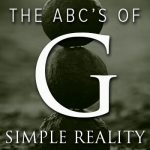
While working as a consultant for the Jet Propulsion Laboratory at NASA in the early 1970s, British biologist James Lovelock conceived of the Earth as a self-regulating system, the “Gaia hypothesis.” Gaia was the name of the Greek Earth Mother goddess. “According to the hypothesis, humankind is part of an overall complex biosphere organism. People, along with all other forms of life forms on the planet, make an integral contribution to Gaia’s homeostasis, which in turn makes life possible.”[i] The science supporting the Gaia hypothesis is not enough alone to make the leap to Oneness and the one Mind permeating and expressing through and beyond all form, but it is a good first step. The insight into the perfection of Creation is intuitive and beyond the comprehension of the human intellect.
The worldview of Oneness has some implications that may seem radical to those of us used to the P-B worldview. Remember Seth’s mantra that we create our own reality. Joseph Campbell waxes eloquently on what that might mean. “We may think of ourselves, then, as the functioning ears and eyes and mind of this earth, exactly as our own ears and eyes and minds are of our bodies. Our bodies are one with this earth, this wonderful ‘oasis in the desert of infinite space;’ and the mathematics of that infinite space, which are the same as of Newton’s mind—our mind, the earth’s mind, the mind of the universe—come to flower and fruit in this beautiful oasis through ourselves.”[ii]
Even a scientist-turned mystic, who is also a physicist, can intuit a higher, more profound and more beautiful truth than most mere intellects can grasp. “Anaximander saw the universe as a kind of organism which was supported by ‘pneuma,’ the cosmic breath, in the same way as the human body is supported by air.”[iii] That’s why we have poetry and the other arts. They can express in their myriad languages the higher truth of Simple Reality.
[i] Guiley, Rosemary. Harper’s Encyclopedia of Mystical and Paranormal Experience. San Francisco: Harper, 1991, p. 449.
[ii] Campbell, Joseph. Myths To Live By. New York: Bantam, 1973, pp. 252-253.
[iii] Capra, Fritjof. The Tao of Physics. New York: Bantam, 1975, p. 6.


